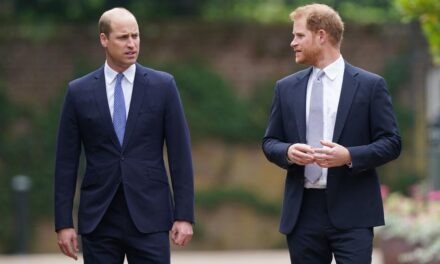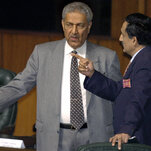
Covid-19 Live Updates: A ‘Terrifying’ Covid-19 Surge Will Land in Biden’s Lap

Hours after President-elect Joseph R. Biden Jr. declared the coronavirus a top priority, the magnitude of his task became starkly clear on Sunday as the nation surpassed 10 million cases and sank deeper into the grip of what could become the worst chapter yet of the pandemic.
The rate of new cases is soaring, and for the first time is averaging more than 100,000 a day in the United States, which has reported more virus cases than any other country. An astonishing number of Americans — one in 441 — have tested positive for the virus just in the last week.
With 29 states setting weekly case records, the virus is surging in more than half the country. Nationwide, hospitalizations have nearly doubled since mid-September, and deaths are slowly increasing again, with few new interventions in place to stop the outbreak.
The nation’s worsening outlook comes at an extremely difficult juncture: President Trump, who remains in office until January, is openly at odds with his own coronavirus advisers, and winter, when infections are only expected to spread faster, is coming.
In a victory speech on Saturday night, Mr. Biden said he was quickly focusing his attention on the pandemic, including plans on Monday to announce a task force of coronavirus advisers.
He is expected to name three co-chairs of the 12-member panel: Vivek Murthy, a former surgeon general, who has been a key Biden adviser for months and is expected to take a major public role; David Kessler, a former commissioner of the Food and Drug Administration; and Dr. Marcella Nunez-Smith, a Yale University professor.
But he faces a nation divided over mask rules and business shutdowns, even as experts say the situation may further deteriorate before the new administration takes over in late January.
At the White House, Mr. Trump has largely shuttered the coronavirus task force, insisted without evidence that the nation is “rounding the corner” in the fight against the virus, and suggested that he might fire the government’s top infectious disease expert, Dr. Anthony S. Fauci. In the days before and after Election Day, six White House aides and a top campaign adviser tested positive.
All of it comes as colder weather will force more people indoors; as college semesters end and students return home; and as gatherings for Thanksgiving, Christmas and other holidays threaten to sow new outbreaks.
“I see this as a very precarious moment,” said Dr. Ashish K. Jha, the dean of the Brown University School of Public Health, who said that the Trump administration had “basically thrown in the towel” on trying to control the pandemic, while Mr. Biden and his team have nothing to wield but “moral power and social power” until Jan. 20.
“Without significant action,” Dr. Jha said, “the idea that we have another 100,000 deaths by Inauguration Day would be a conservative estimate.”

As winter approaches, Europe is struggling with a brutal resurgence of the virus, one that, along with the U.S. surge, has helped push the global case count over 50 million, according to a New York Times database. France and Italy have reported record daily case totals in recent days as both countries have moved to lock down some regions.
In Italy, where the devastation of the first wave in the spring looms large, 39,809 new coronavirus cases were reported on Saturday, a new daily record. Its daily average has increased by 119 percent over the past two weeks.
Deaths in Italy have increased by a staggering 232 percent over the past two weeks, with 425 deaths reported on Saturday.
Arno Kompatscher, the governor of Italy’s Bolzano Province, known for its ski resorts, moved on Sunday to lock down the area, limiting travel and closing most nonessential stores and in-person dining.
Bolzano’s “red zone” restrictions add it to the list of Italian regions under strict lockdown; Valle d’Aosta, Piedmont and Lombardy — home to Milan — are also under shutdowns.
France reported a record 60,486 new cases on Friday and 40,439 on Saturday. While the daily average there has risen by 57 percent over the past two weeks, deaths have increased by 170 percent in the same period.
On Sunday, nine of the 10 countries with the highest average daily case totals per person were in Europe, including the Czech Republic (third highest), Switzerland (fourth highest) and France (eighth highest), according to a Times database.

Utah’s governor announced a new state of emergency Sunday night “due to the alarming rate of Covid infections.” Gov. Gary Herbert, a Republican, wrote on Twitter that the changes, which include a statewide mask mandate, were “not shutting down our economy, but are absolutely necessary to save lives and hospital capacity.”
The state, which has reported 132,621 total cases of the virus, and 659 deaths, has a seven-day average of more than 2,000 cases daily, according to a New York Times database.
He wrote that social gatherings would be limited to “household-only” for the next two weeks and that all extracurricular activities would be put on hold.
In addition to rising cases and deaths, The Salt Lake City Tribune reported that, “hospitalizations continue to rise at a crisis level.” On Sunday, The Tribune said, 424 Utahns were currently hospitalized, a record. A week ago, Utah stood at 342 hospitalizations.
“In my 11 years as governor, I have seen Utahns do remarkable things,” he wrote. “We have overcome extraordinary challenges and great adversity. I implore you now to do all you can to stop the spread. It is time for Utahns to unite in this response and bring healing back to our state.”

TAIPEI, Taiwan — Starting Monday, representatives from more than 190 countries will take part in a virtual meeting of the World Health Organization that will largely focus on the global response to the coronavirus pandemic that has sickened more than 50 million people and killed more than 1.2 million.
Noticeably absent will be one of the few places in the world that has won international praise for its success in controlling the virus: Taiwan.
As of Monday, Taiwan had not yet received an invitation to join the World Health Assembly meeting, which will end on Saturday, according to a spokeswoman for Taiwan’s foreign ministry, despite a multilateral effort led by the United States to support the island’s bid for observer status.
The self-governed island, which Beijing claims as its own territory, had observer status until 2016. That changed when Taiwan elected President Tsai Ing-wen, who is loathed by the Chinese Communist Party. Since then, Beijing has repeatedly blocked Taiwan’s efforts to participate in the assembly.
Joanne Ou, spokeswoman for Taiwan’s foreign ministry, said in a statement that excluding Taiwan “not only ignores the health rights of the Taiwanese people, but is also very ironic considering the lofty goal of ‘health for all’ that is outlined in the W.H.O.’s charter.” Since December, Taiwan, which has a population of 23 million, has had only 578 cases and 7 deaths from the virus.
The W.H.O. has previously been criticized for its excessive praise of the Chinese government in the early days of the pandemic and for ceding control to China in the crucial search for the animal origin of the coronavirus.
Among the agency’s most vocal critics is President Trump, who earlier announced that the United States would withdraw from it. President-elect Joseph R. Biden Jr. has said he would restore U.S. membership in the organization.

The Navajo Nation, under a weekend lockdown, is averaging more than 100 new daily cases for the first time since early June.
The nation, which stretches across much of northeastern Arizona and into parts of Utah and New Mexico, reported 124 new coronavirus cases and two new deaths on Saturday.
A 56-hour curfew was in effect this weekend “due to the uncontrolled spread of Covid-19 in 29 communities on the Navajo Nation,” Jonathan Nez, the Navajo president, said in a statement released on Sunday.
That spread is “largely due to travel off the Navajo Nation and family gatherings,” the statement said.
The nation has recorded 12,571 total cases and 593 deaths from the virus, according to the Navajo Department of Health. In addition to the strict weekend lockdown, a weekday curfew is in effect from 9 p.m. to 5 a.m.
“The numbers are not looking good for us here on the Navajo Nation and across the country,” Mr. Nez said in the statement.
The curfews come after extensive restrictions this summer, when roads were closed to outside visitors, and restaurants — including even some fast food drive-throughs — were shut down.
Despite the spike — cases began increasing at the end of September — voter turnout increased significantly this year compared with 2016 in the Arizona counties that overlap the Navajo and Hopi tribal lands.
In Apache County, whose population is about three-quarters Native American, turnout increased by 27 percent since the 2016 election, with over 98 percent of votes reported on Sunday evening.

The 2020 calendar promised an especially notable Veterans Day, marking 75 years after World War II ended and 70 years after the Korean War began. But just as the pandemic changed the calculus for the more joyful holidays of summer, so too is it upending plans for the more somber holiday this week that commemorates those who served the nation in wartime.
Many cities around the country have canceled events; others plan to hold them virtually. Here is how some of the country’s prominent observances are being affected.
The annual wreath-laying ceremony at Arlington National Cemetery will take place at 11 a.m. Eastern on Wednesday, and will be streamed live online. The cemetery will be open to the public that day, with masks required, but the Memorial Amphitheater and the Tomb of the Unknowns will be closed. At several veterans’ cemeteries in Maryland, ceremonies will take place with attendance limited to 250 people.
Philadelphia, which held its Veterans Day events over the weekend, went entirely virtual. Birmingham, Ala., whose annual parade is believed to be one of the nation’s oldest, canceled in-person events in favor of a virtual parade and fireworks display; organizers said it was the first time they had done so.
In New York, which usually holds one of the nation’s largest commemorations, organizers said a 120-vehicle motorcade would follow the regular parade route down Fifth Avenue on Wednesday carrying representatives of the groups that usually march, while online, a virtual “line of march” displays profiles of participants. Veterans’ motorcycle clubs would also ride the route, and small, socially distanced wreath layings would be held throughout the city, according to the United War Veterans Council in New York.
Some cities, like Las Vegas, canceled their events entirely. Others planned to hold Veterans Day 5K runs, fireworks and parades, and place flags on grave sites, with social distance precautions and fewer attendees.
Though many colleges have had significant virus outbreaks or imposed tight restrictions on their campuses to stave off infection, some schools, like Wichita State University and Missouri State University, said they would welcome veterans to on-campus commemorations or make the events viewable online.

The pandemic has turbocharged profits at some big businesses, like Amazon, which reported a 70 percent increase in earnings in the first nine months of the year. But it has devastated others, like Delta Air Lines, which lost $5.4 billion in the third quarter.
Perhaps most surprising: Some companies that had feared for their lives in the spring, among them some rental car businesses, restaurant chains and financial firms, are now doing fine — or even excelling.
Wall Street analysts expect earnings to rebound to a record high next year. And, over all, 80 percent of companies in the S&P 500 stock index that have reported third-quarter earnings so far have exceeded analysts’ expectations, said Howard Silverblatt, senior index analyst for S&P Dow Jones Indices.
As the pandemic forced people to stay home and do more things online, some successful companies, like Amazon, were perfectly positioned to take advantage of the change. Now, these businesses are becoming even more dominant.
Tech companies were strong before the pandemic downturn — and have powered through the rout, which could help the economy recover faster this time, said Jonathan Golub, chief U.S. equity strategist at Credit Suisse Securities.
But the outlook is dire for other businesses.
Passenger airlines are among the biggest losers of the pandemic, and they have few options to improve their prospects. Delta, United Airlines and American Airlines worked quickly to cut costs and got $50 billion in the March federal stimulus package.
Still, investors are not all that worried, and are signaling that they expect a broad profits recovery among the largest U.S. companies. The S&P 500 has soared nearly 57 percent from its March low and is up 8.6 percent for the year.
Those gains may seem odd given that the combined profits of the companies in that index are on track to decline 25 percent this year from a record showing in 2019. But a big chunk of that rally can be attributed to a handful of technology stocks.
Of course, many struggling businesses, including lots of restaurants, stores and services companies are not traded on the stock market. That means a surge in stock prices can give a misleadingly optimistic view of where the economy is headed.

For a certain kind of worker — unencumbered by children or lost income, with steady jobs that were doable from anywhere — the pandemic was a moment to grab destiny and bend employment to their favor.
This tiny cohort gathered their MacBooks, passports and N95 masks and became digital nomads. They Instagrammed their workdays from empty beach resorts in Bali and took Zoom meetings from tricked-out camper vans. They made balcony offices at cheap Airbnbs in Tulum, Mexico and booked state park campsites with Wi-Fi.
And occasionally they were deflated.
David Malka, an entrepreneur in Los Angeles, had heard from friends who were living their best work-abroad lives. In June, he created a plan: He and his girlfriend would work from Amsterdam, with a quick stop at a discounted resort in Mexico along the way.
The first snag happened almost immediately. In Cabo San Lucas, Mr. Malka and his girlfriend realized that the European Union wasn’t about to reopen its borders to American travelers, as they had hoped. Returning to the United States wasn’t an option: Mr. Malka’s girlfriend was from the United Kingdom, and her visa wouldn’t allow it.
The two decided to stay in Mexico a bit longer. At first it was glamorous, Mr. Malka said. Working by laptop — he manages a portfolio of vacation rental properties — they had the resort to themselves. But by the second week, their situation began to feel like “Groundhog Day.” The city and the beach were closed, so the couple never left the resort. Meanwhile, the travel shutdown was hammering his business.
“All we could do is sit by the pool or go to the gym,” Mr. Malka said. The repetition, boredom and isolation all wore on them.
Eventually, the couple took a 28-hour, two-layover trip to Amsterdam, where Mr. Malka was indeed turned away at customs. They retreated to London, where they promptly broke up.
Katie Smith-Adair and her husband run PlaceInvaders, an event company in Los Alamos, Calif. When the pandemic halted business, they packed up their Volvo with a tent and an outdoor shower for a monthlong camping road trip around the West. All the while, she worked 40 hours a week trying to set up PlaceInvaders for virtual events.
The first lesson learned? Never trust campground Wi-Fi. The second? Expect judgment from campground workers for needing the Wi-Fi.
“They make you feel bad because you’re not unplugging and getting into nature,” Ms. Smith-Adair said. “This is my job. I want to unplug, but I also have to get on that Zoom call real quick.”


















